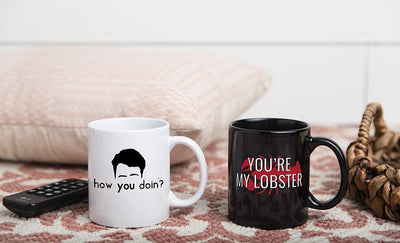Understand the Truth about Corporate Gifting Before You Regret It
Corporate gifting is an essential part of a customer engagement and retention strategy. Giving quality, practical gifts to your clients builds a relationship in a personalized, unique, and fun way. The key to any marketing strategy is measuring performance and setting benchmarks for success—this includes corporate gifting. But, ROI and success for a corporate gifting campaign can be difficult to measure. Here’s how to set your marketing goals accurately and rethink how you calculate the ROI for corporate gifts.
Measure Your ROI
Measuring the ROI of client gifts is inherently difficult, because its purpose is to build goodwill and brand recognition—something that doesn’t translate well into numbers. It’s also different from traditional marketing campaigns in that corporate gifts don’t lead directly to a conversion, whether that be a purchase or closing a deal in the way that something like a coupon code would. That doesn’t mean that you shouldn’t think about ways to measure success and ROI with your corporate gifts.
The key is to focus less on how much money a corporate gift will get you in return and instead think about the intangible benefits of building a better relationship between you and your clients. However, here are a few key metrics you can watch to determine your ROI:
- Referrals from clients who receive gifts
- Thank-you notes or phone calls from clients after receiving gifts (a follow-up call after sending a gift is also a great sales strategy)
- Social media sharing
- Repeat service and customers who received your gift
These are just a few of the measurable ways to show value from your corporate gifts. Once you know the numbers and can track your spending and outcomes year over year, you can refine and quantify the benefits and ROI in a meaningful way.
Redefine success
But, as mentioned earlier, revenue isn’t the most important metric of ROI for gifts. In fact, it can be counterproductive to look at corporate gifting as just a way of incentivizing revenue. The focus of gifts is to build relationships and show the value of your brand to your clients.
Focus on Repeat Customers
Consumers who feel connected to brands are more likely to purchase again and become brand evangelists, converting their friends and families who will already be primed to love your business too. Repeat customers and referrals are some of the most valuable business you can receive. New customers require a lot of time, attention, and money to attract. But, loyal customers can be worth 10 times their first purchase. Nurturing and encouraging enthusiastic clients pays off big time.
To determine the success for repeat business, try tracking the repeat orders and referrals of clients who receive a gift vs. those who don’t receive a gift. This can be an actionable metric that shows the value of corporate gifting. Make sure your gift is high quality, useful, and creative!
Measure Your Social Media Performance
If you’ve given an interesting or unique gift, keep an eye on social media. Your clients may post photos of their gift to their Instagram, Facebook, and Twitter feeds, which gives your brand free organic reach and a great recommendation to their followers. Make sure you can be found easily on social media, and don’t forget to give the post some love with a share, comment, and like. It will give your gift and their appreciation a lot more mileage.
Track the metrics on your shares as well as the engagement on the original post. As you ramp up your corporate gifts, measure the success of each individual campaign on social media to see what items and timing works best to get the most social engagement.
Head for the C-Suite, but Check-in with the Front Desk
If you’re trying to reach C-level executives, it can be tough to find a gift that meets their needs or even one that reaches their desk. In these cases, it’s a good idea to remember to also give to the gatekeepers like secretaries or support staff who will have a role in using your services or products.
More importantly, it gets your face and your brand in front of the people who have access to the decision makers in an organization. Rather than going straight for the top, build a relationship with others in the organization and make your brand memorable at all levels.
Follow Up with a Phone Call
If you want to know the impact of your gift, don’t be afraid to give the client a call after delivery. In some cases, they’ll reach out to you with an email or phone call after they’ve received it expressing their thanks. But, if you don’t hear anything, don’t expect the worst; check in with them to make sure they got the gift, and see how business is going. Try not to go too heavy on the sales pitch, but it’s okay to ask if there’s anything you can do for them.
In your call or email, listen to or read comments carefully. These comments can be valuable to understanding what worked and what didn’t, and how you can improve your gifts or even your business in the future. Compare your comments as they come in, look for trends with your clients, and include that in your metrics.
Every successful marketing strategy relies on measurement. Without measuring your results, you’re making assumptions about success, which is only as good as guessing. While measuring something as personal as gifts or client interactions can be difficult, it is possible—and necessary—to do so. Look at the rates of repeat customers and referrals, check in with social media, and follow up after you send your gifts. This information will be invaluable as you determine budgets and how to wisely spend your dollars on promotional items and client gifts each year.









